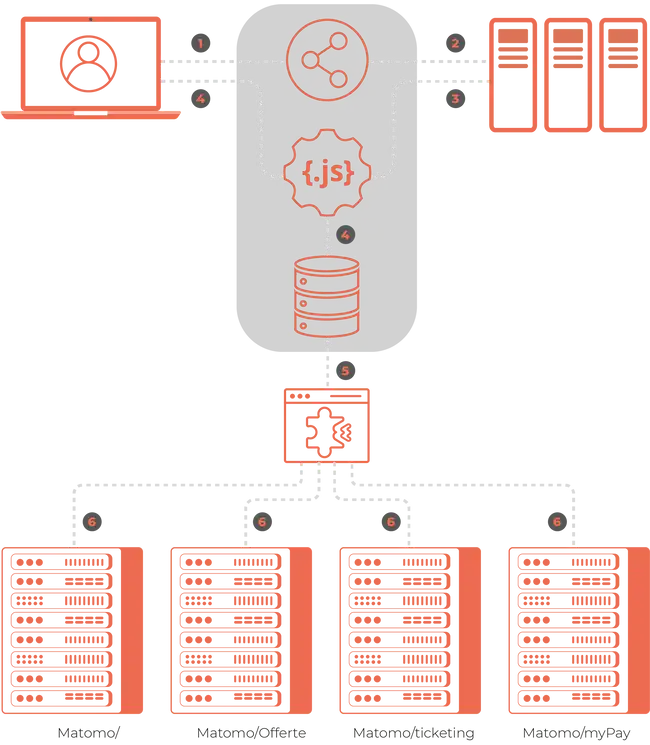Formulating and verifying the use of spending budgets allocated to Information Technology is imperative if we are to have continuous control of SLA compliance and datacenter profitability. The use of infrastructure dedicated to service delivery, needs a unit of measurement that expresses, with a single value, the quantity and quality of the service delivered. This is why Traffic Analytics is developed, a data warehouse specifically studied for the Real-Time treatment and aggregation of the huge amount of traffic data coming from the routing and balancing layer.
The system is founded on the Counting and aggregating the time of use of individual services. This value expresses a direct relationship between budgets allocated for service delivery, and their actual use. In a word: Government. SLA maintenance, therefore quantity cost maintenance, is a value that is going to take more and more importance in the datacenter industrialization processes and in their evolution in commodity (aka CLOUD computing).
Traffic Analytics is the answer to the need for continuous and objective measurement for the prevention of disruptions caused by the mutability of the starting conditions, such as an increasing of the activities and then a re-adaptation of the budgets for maintaining the service levels initially established. Traffic Analytics condenses, in a single solution, these measurement needs regardless of the technologies used (such as different types of virtualization, different architectural levels, storages, physical machines), and leaves ample architectural freedom to the evolution of the datacenter.
Traffic Analytics provides a a highly refined analytical and transactional data population and aggregation engine for huge volumes of data (BIG-DATA) to support enterprise business intelligence, accounting and billing platforms.
The design pattern is based on five main elements:
Traffic Analytics uses a relational database to historicize traffic statistics. The database and its manager can possibly be installed separately from the balancing service in order to consolidate traffic statistics from different nodes. The same analytical data from balancing systems can be aggregated and analyzed differently and simultaneously to meet the needs of application verification, networking, application utilization, and SLA compliance in intrusion and phishing analysis.
Traffic Analytics can capture temporal data on both system and application responses by analyzing all phases of traffic, from the acquisition of the request to the connection phase of the service to the detection of the last information sent from the service to the clients, measuring the response times of individual services with splits on the infrastructure layers and identifying all elements of the chain both infrastructural and application. Data lifecycle analysis enables early isolation of infrastructure anomalies at multiple levels by highlighting areas for intervention to improve service usability. Through the GUI it is possible to check for each module the current profile, status, and view logfiles.
It is also possible to start or stop the module and notify by email the event (watchdog). This allows you to detect any anomalies, including application anomalies, for immediate corrective action. Analysis of the data highlights not only the absolute performance of applications, but also allows the various stages of service evolution to be broken down into multiple elements, such as connection time, first response time, and in general partial information traversal times, allowing precise diagnosis of the problem. The sophistication of the data collected with nanosecond (billionth of a second) granularity, allows for in-depth traffic testing by also detecting the intermediate times of information traversal through the architectural layers. Analysis of request and response traversal times (Response-Time) dissected into partial times (Lap-Time) allows precise analysis to identify bottlenecks and lays the foundation for their solution. The architecture enables real-time writing, consolidation, and aggregation of several million records per hour providing analysis and reporting systems with immediately usable views and datasets.
Traffic Analytics comes with consolidation templates in source format from which further interpretations of traffic data can be customized and adapted ensuring flexibility of use and growth over time. Traffic Analytics can be integrated on various business intelligence platforms and monitoring systems.

The solution is available in the following versions: